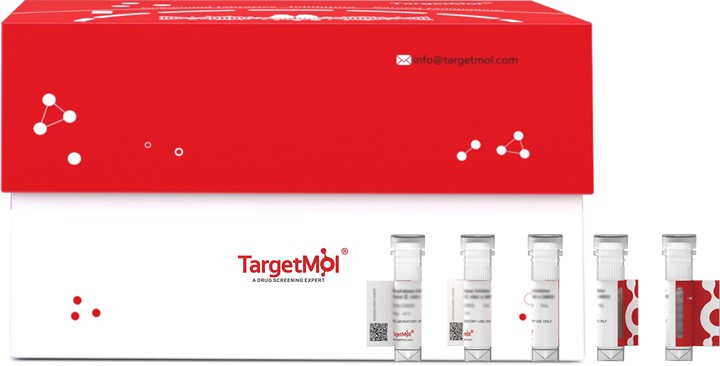

Surfactant pulmonary-associated protein D, also known as SFTPD and SP-D, is a member of the collectin family of C-type lectins that is synthesized in many tissues including respiratory epithelial cells in the lung, and contains one C-type lectin domain and one collagen-like domain. The polymorphic variation in the N-terminal domain of the SP-D molecule influences oligomerization, function, and the concentration of the molecule in serum. SFTPD is produced primarily by alveolar type II cells and nonciliated bronchiolar cells in the lung and is constitutively secreted into the alveoli where it influences surfactant homeostasis, effector cell functions, and host defense. It is upregulated in a variety of inflammatory and infectious conditions including Pneumocystis pneumonia and asthma. SFTPD is humoral molecules of the innate immune system, and is considered a functional candidate in chronic periodontitis. Besides, it is involved in the development of acute and chronic inflammation of the lung. Several human lung diseases are characterized by decreased levels of bronchoalveolar SFTPD. Thus, recombinant SFTPD has been proposed as a therapeutical option for cystic fibrosis, neonatal lung disease and smoking-induced emphysema. Furthermore, SFTPD serum levels can be used as disease activity markers for interstitial lung diseases.

| Pack Size | Availability | Price/USD | Quantity |
|---|---|---|---|
| 100 μg | 5 days | $ 600.00 |
| Description | Surfactant pulmonary-associated protein D, also known as SFTPD and SP-D, is a member of the collectin family of C-type lectins that is synthesized in many tissues including respiratory epithelial cells in the lung, and contains one C-type lectin domain and one collagen-like domain. The polymorphic variation in the N-terminal domain of the SP-D molecule influences oligomerization, function, and the concentration of the molecule in serum. SFTPD is produced primarily by alveolar type II cells and nonciliated bronchiolar cells in the lung and is constitutively secreted into the alveoli where it influences surfactant homeostasis, effector cell functions, and host defense. It is upregulated in a variety of inflammatory and infectious conditions including Pneumocystis pneumonia and asthma. SFTPD is humoral molecules of the innate immune system, and is considered a functional candidate in chronic periodontitis. Besides, it is involved in the development of acute and chronic inflammation of the lung. Several human lung diseases are characterized by decreased levels of bronchoalveolar SFTPD. Thus, recombinant SFTPD has been proposed as a therapeutical option for cystic fibrosis, neonatal lung disease and smoking-induced emphysema. Furthermore, SFTPD serum levels can be used as disease activity markers for interstitial lung diseases. |
| Species | Mouse |
| Expression System | HEK293 |
| Tag | His |
| Accession Number | P50404 |
| Synonyms | AI573415, Sftp4, SP-D, surfactant protein D |
| Construction | A DNA sequence encoding the mouse SFTPD (NP_033186.1) precursor (Met 1-Phe 374) was expressed with a C-terminal polyhistidine tag. |
| Protein Purity | ≥ 90 % as determined by SDS-PAGE |
| Molecular Weight | 37.2 kDa (predicted) |
| Endotoxin | < 1.0 EU per μg of the protein as determined by the LAL method |
| Formulation | Lyophilized from sterile PBS, pH 7.4. Please contact us for any concerns or special requirements. Normally 5 % - 8 % trehalose, mannitol and 0. 01% Tween 80 are added as protectants before lyophilization. Please refer to the specific buffer information in the hard copy of CoA. |
| Reconstitution | A hardcopy of datasheet with reconstitution instructions is sent along with the products. Please refer to it for detailed information. |
| Stability & Storage |
Samples are stable for up to twelve months from date of receipt at -20℃ to -80℃. Store it under sterile conditions at -20℃ to -80℃. It is recommended that the protein be aliquoted for optimal storage. Avoid repeated freeze-thaw cycles. |
| Shipping |
In general, recombinant proteins are provided as lyophilized powder which are shipped at ambient temperature.Bulk packages of recombinant proteins are provided as frozen liquid. They are shipped out with blue ice unless customers require otherwise. |
| Research Background | Surfactant pulmonary-associated protein D, also known as SFTPD and SP-D, is a member of the collectin family of C-type lectins that is synthesized in many tissues including respiratory epithelial cells in the lung, and contains one C-type lectin domain and one collagen-like domain. The polymorphic variation in the N-terminal domain of the SP-D molecule influences oligomerization, function, and the concentration of the molecule in serum. SFTPD is produced primarily by alveolar type II cells and nonciliated bronchiolar cells in the lung and is constitutively secreted into the alveoli where it influences surfactant homeostasis, effector cell functions, and host defense. It is upregulated in a variety of inflammatory and infectious conditions including Pneumocystis pneumonia and asthma. SFTPD is humoral molecules of the innate immune system, and is considered a functional candidate in chronic periodontitis. Besides, it is involved in the development of acute and chronic inflammation of the lung. Several human lung diseases are characterized by decreased levels of bronchoalveolar SFTPD. Thus, recombinant SFTPD has been proposed as a therapeutical option for cystic fibrosis, neonatal lung disease and smoking-induced emphysema. Furthermore, SFTPD serum levels can be used as disease activity markers for interstitial lung diseases. |
bottom
Please read the User Guide of Recombinant Proteins for more specific information.
Surfactant protein D/SFTPD Protein, Mouse, Recombinant (His) AI573415 Sftp4 AI 573415 SP-D AI-573415 surfactant protein D recombinant recombinant-proteins proteins protein
